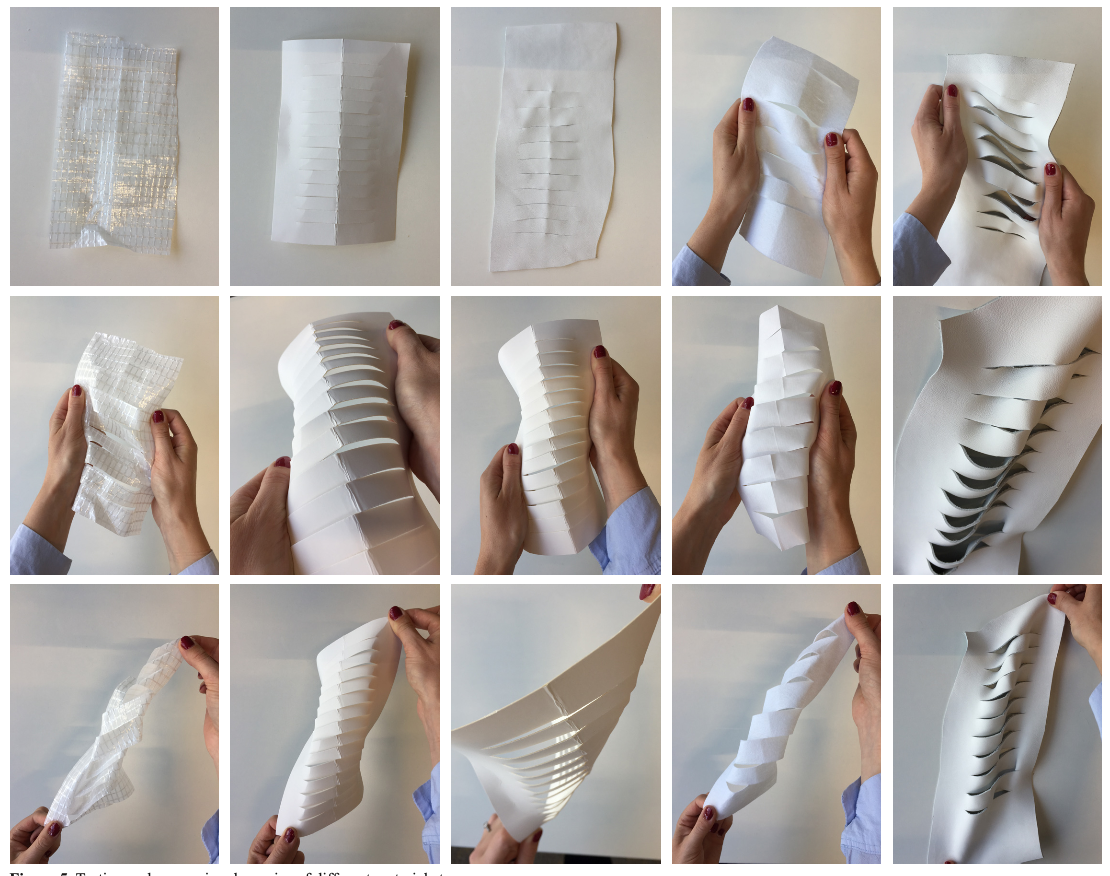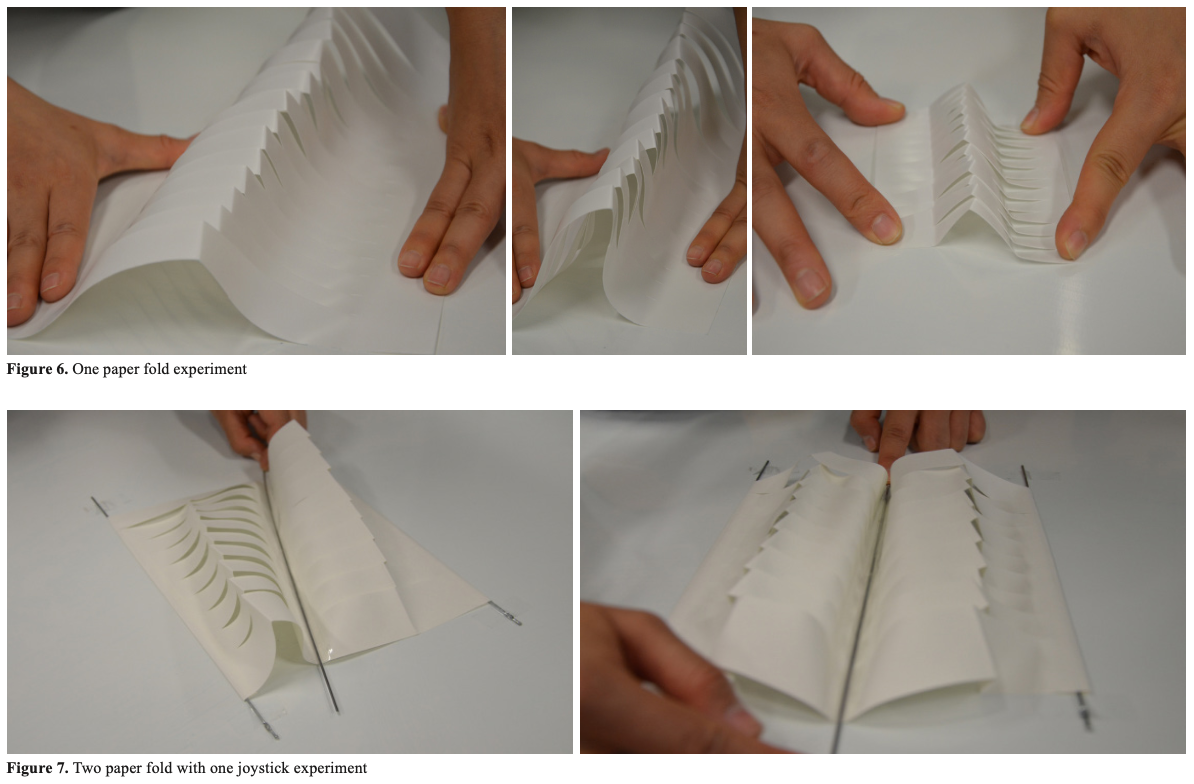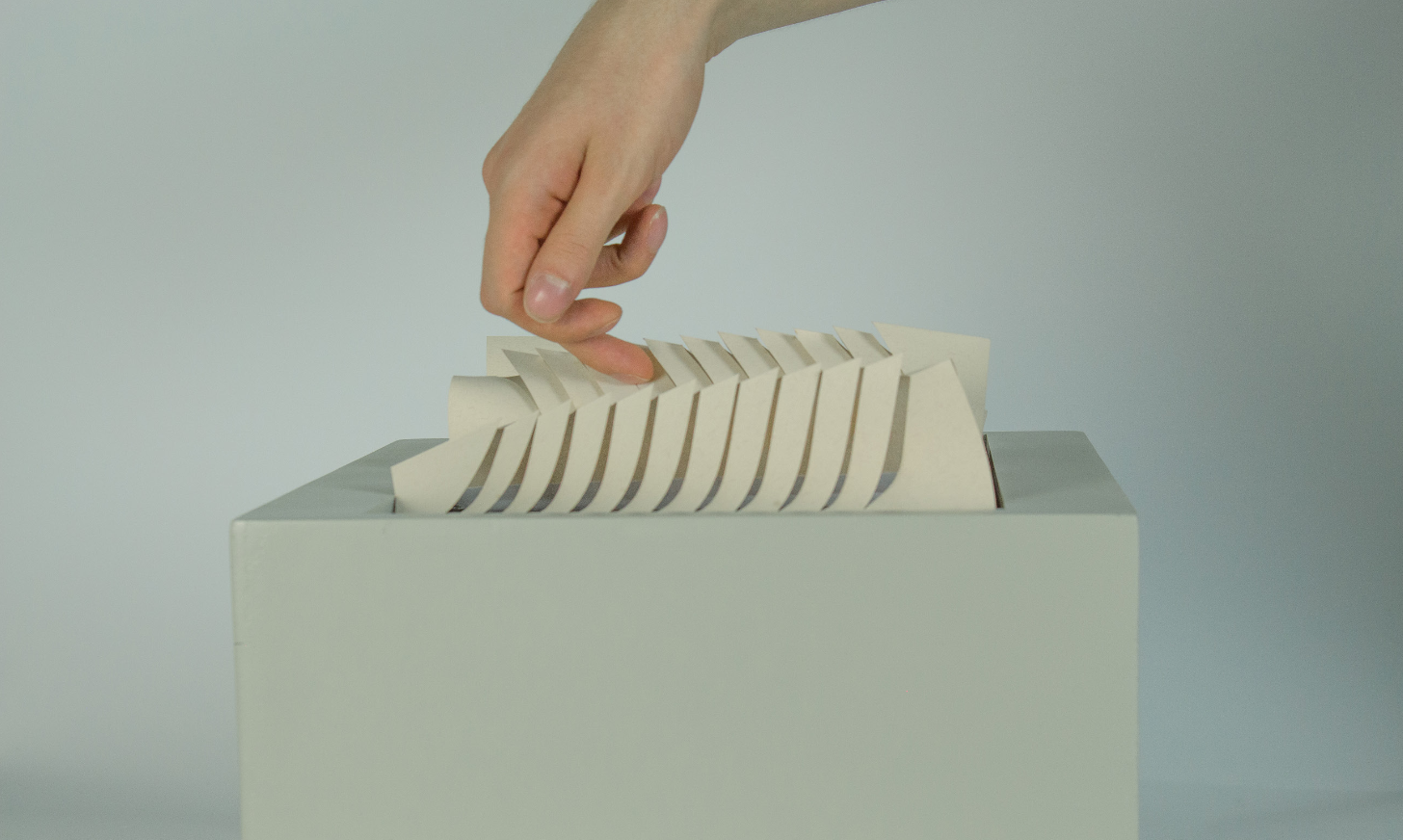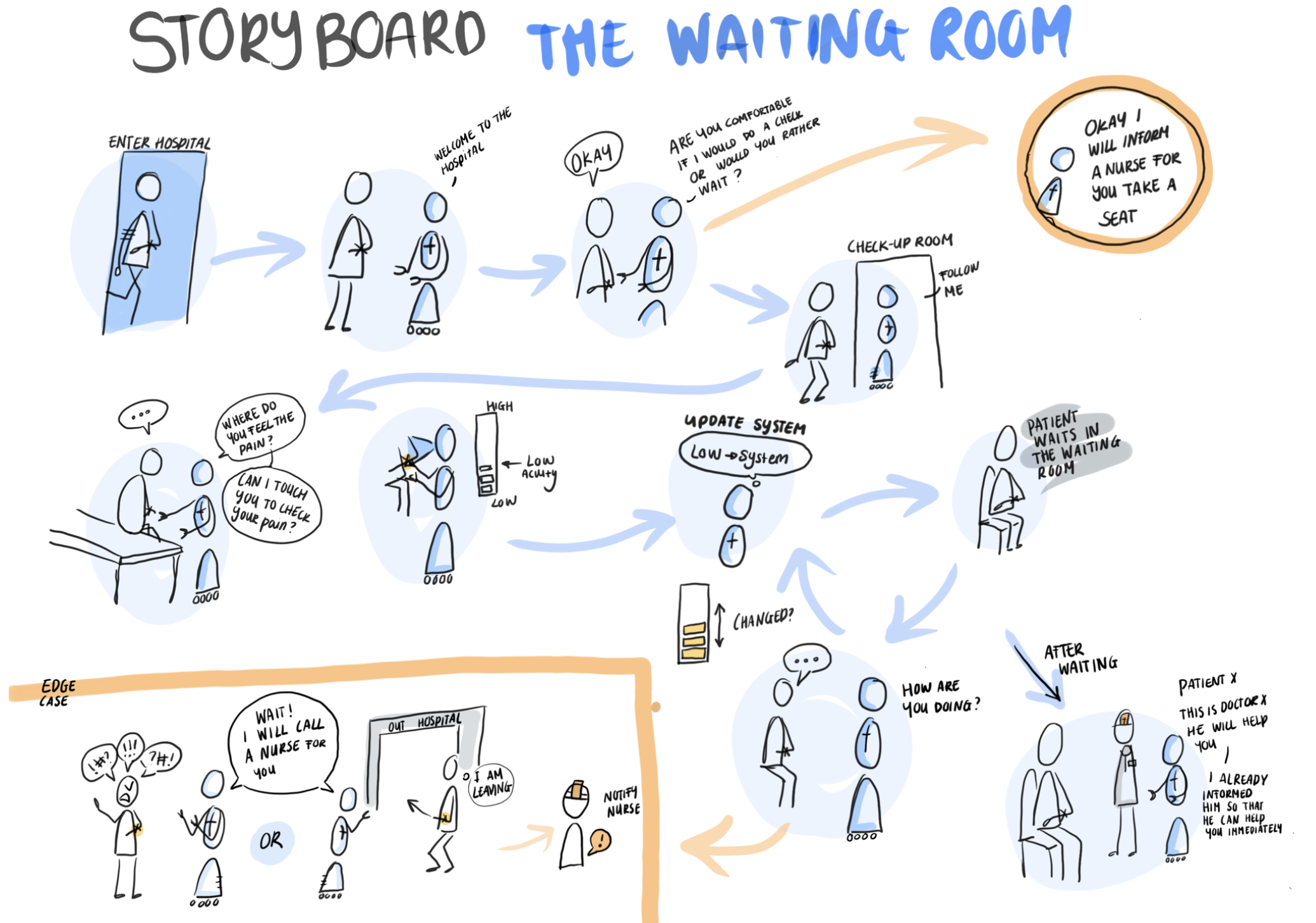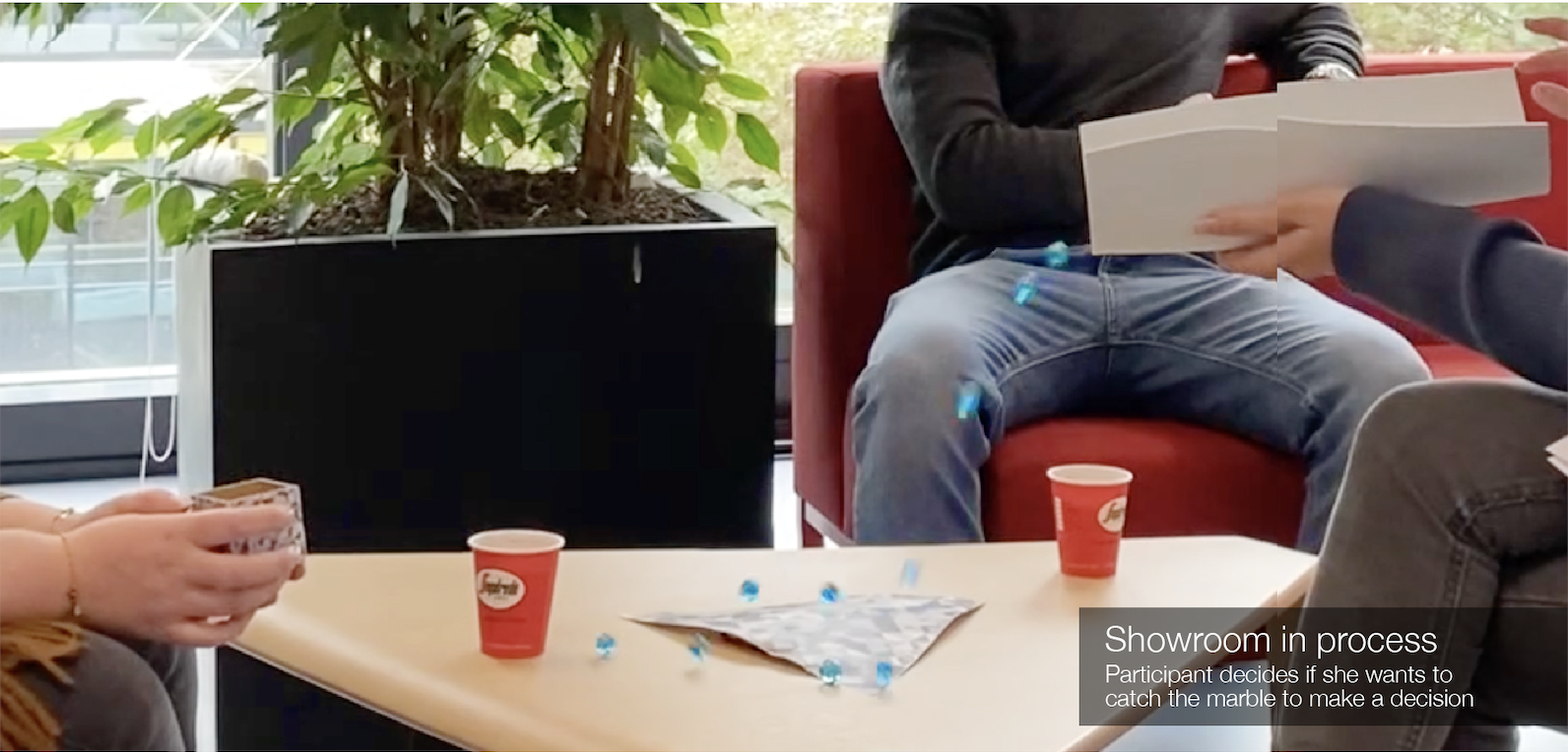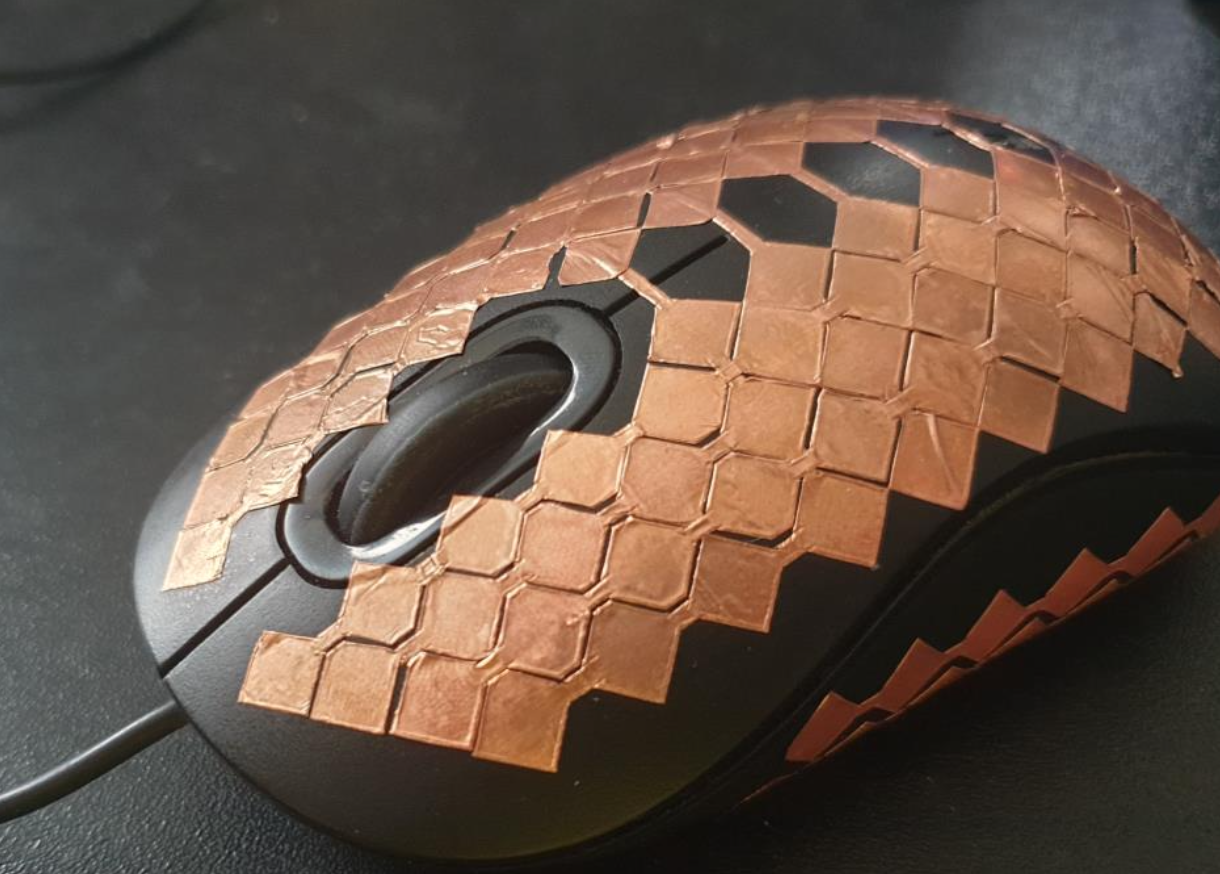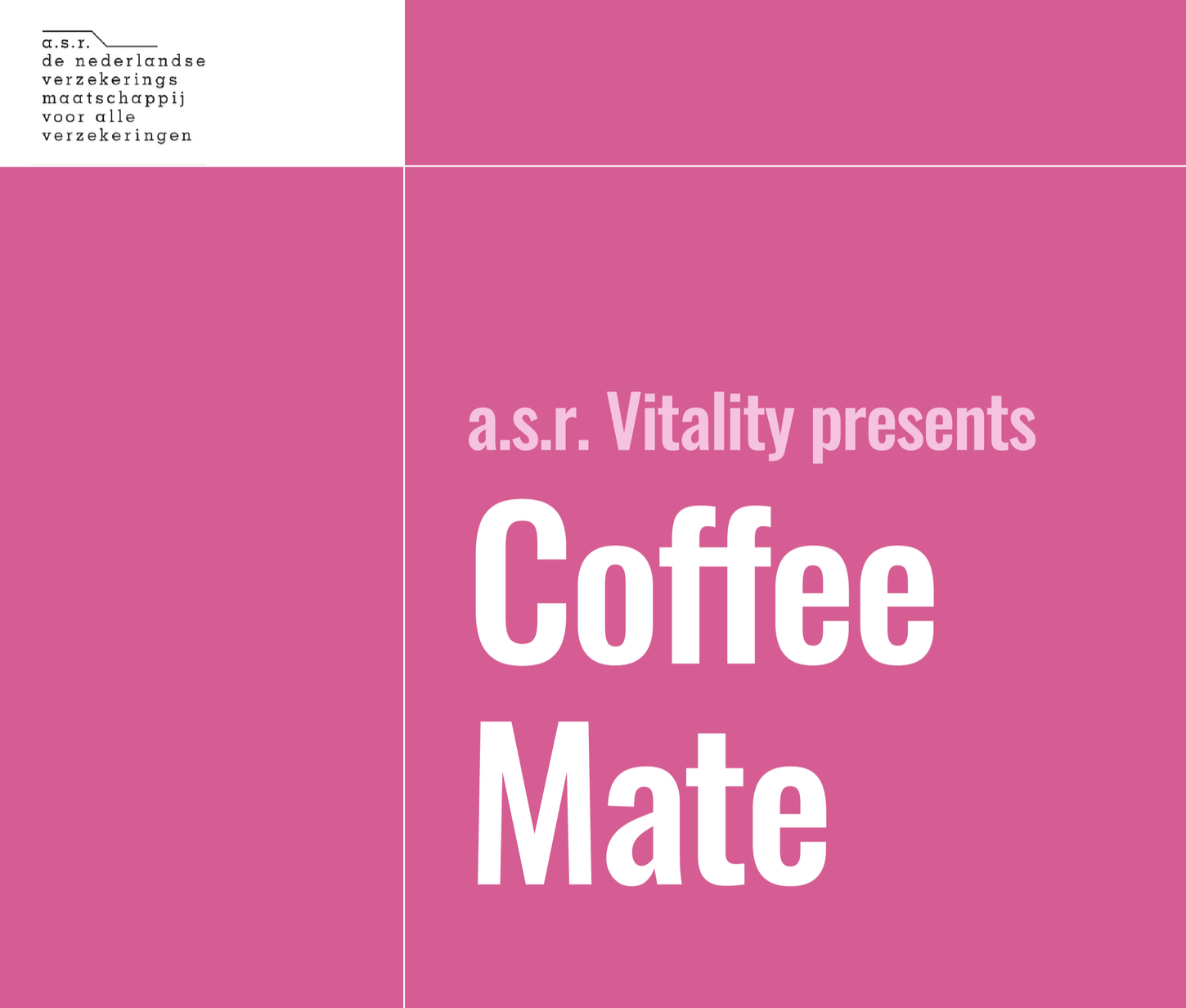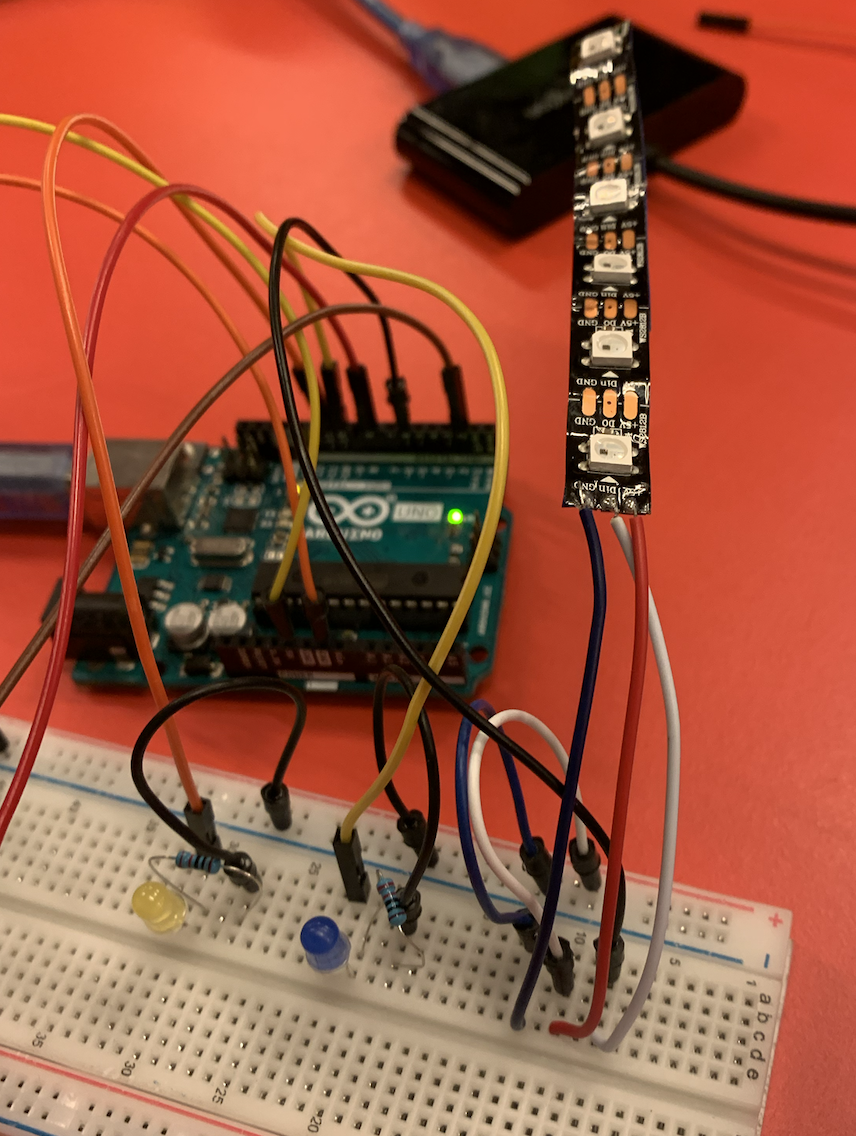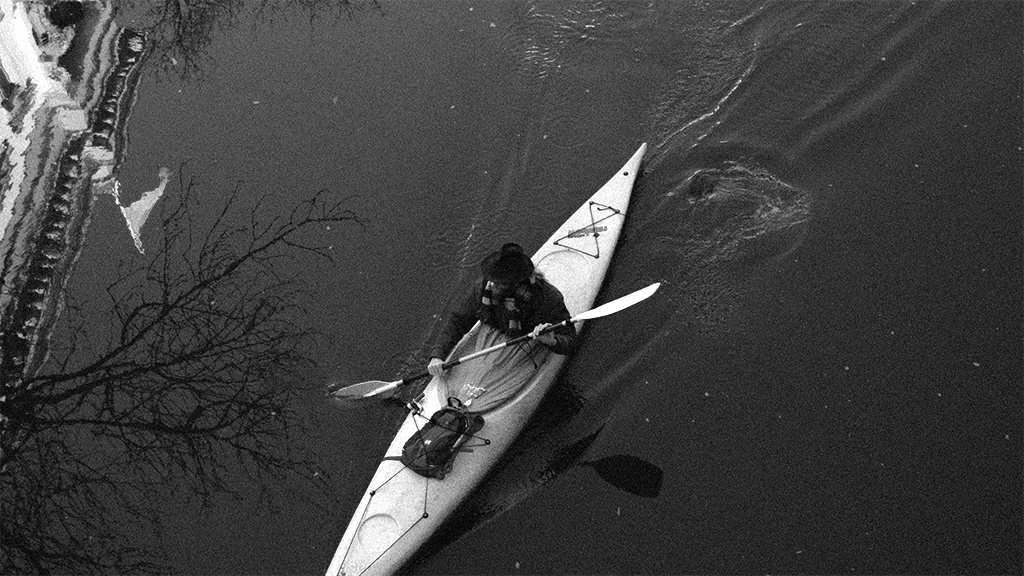This design research process is approached from theory on aesthetic interaction based on Pragmatist philosophy. Through four stages of development: Exploration, analysis, synthesis and detailing, the final prototype is designed to demonstrate the transition moment of opening and closing with paper material. This work mainly focus on haptic and dynamic movements domain.
Process of making
An exploration is shown in which the previous iteration is recreated with different materials including plastic, cardboard, felt and leather. These materials were evaluated and compared to the dynamics of the previous paper iteration. None of these materials were able to recreate or improve on the dynamics that paper had in the same configuration. From the perspective of the user’s emotional experience, the most harmonious interaction form is to directly touch the paper which creates a waving motion. People can touch the paper surface in a quick splash or gently brush across it, which creates waves that slow down and gradually disappear. To give the user space for their own interaction, only one motor is embedded to generate waves, and the user is able to move the middle section by hand and displace the wave. To test different interaction possibilities one person manually actuated the prototype from underneath while the other person interacted with the prototype. Eventually it was chosen to only actuate the twisting motion and not the sliding motion, as that would create noise and limit the user in moving the folded paper from left to right.
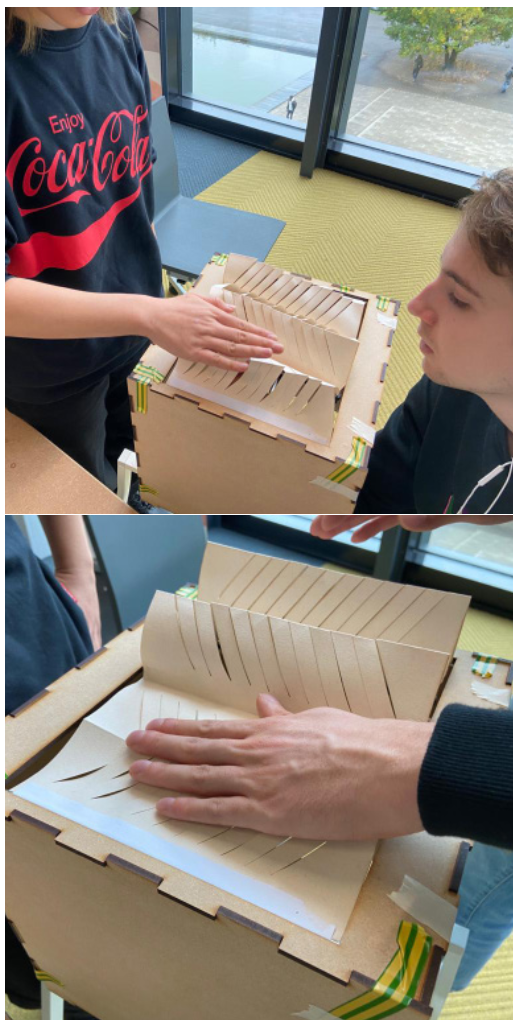
Learning from activities
We intend to take the “why” approach(Lenz, Diefenbach and Hassenzahl,2014)[7] in this design research process. They bridge feedforward[e] and feedback in a more reasonable way when material and rhythm direct people to interact. But we didn’t follow this principle all the way through. In the middle we shifted from arousing emotions brought by the properties of the material to emotions stimulated by the embodiment of satisfying visual dynamic. Although having satisfying dynamic form is important for Aesthetic Interaction[7]. There were lots of experiments with movement mechanisms and sensing, which in the end led to this more pleasing visual experience, but not exactly interaction experience.
